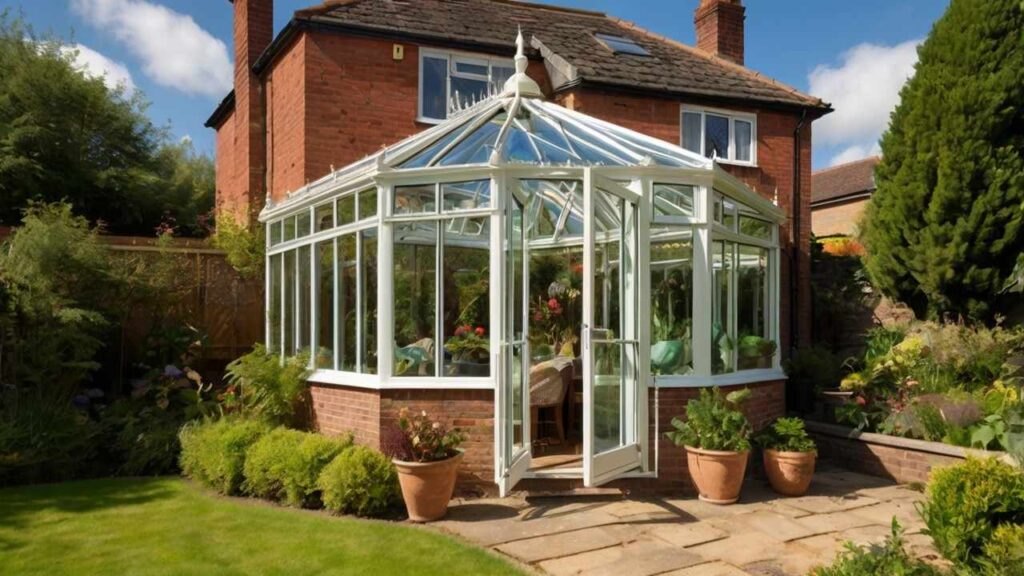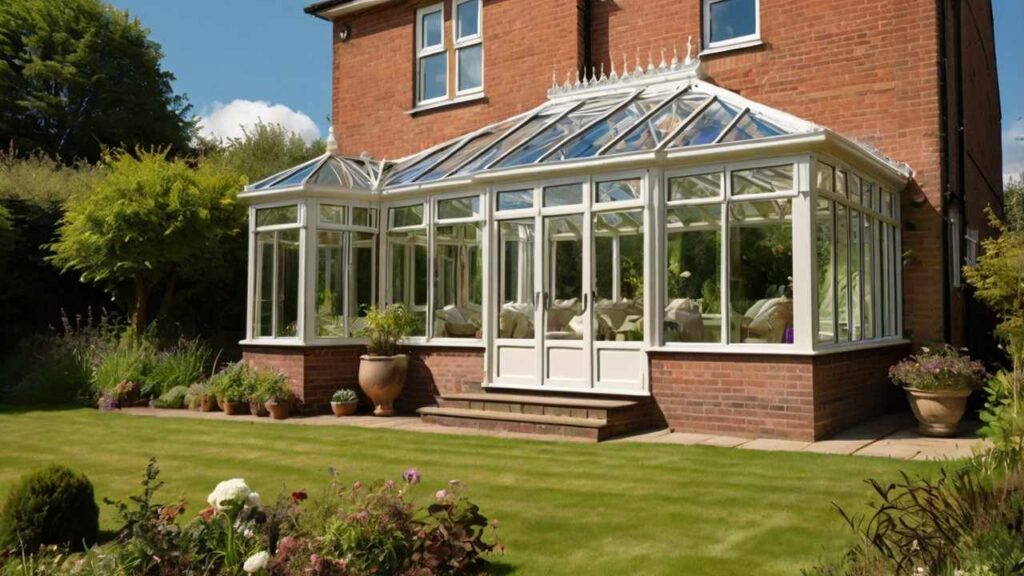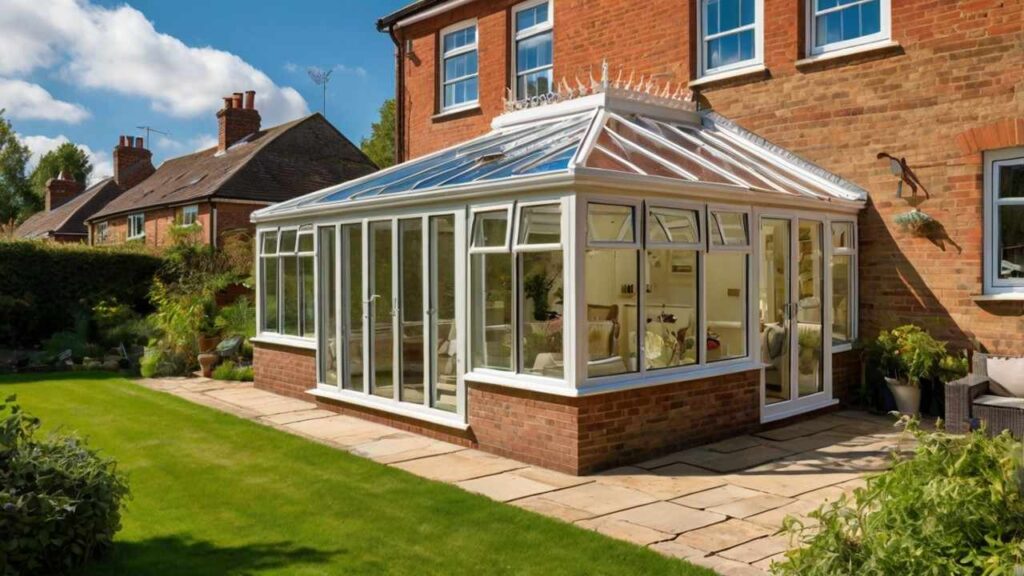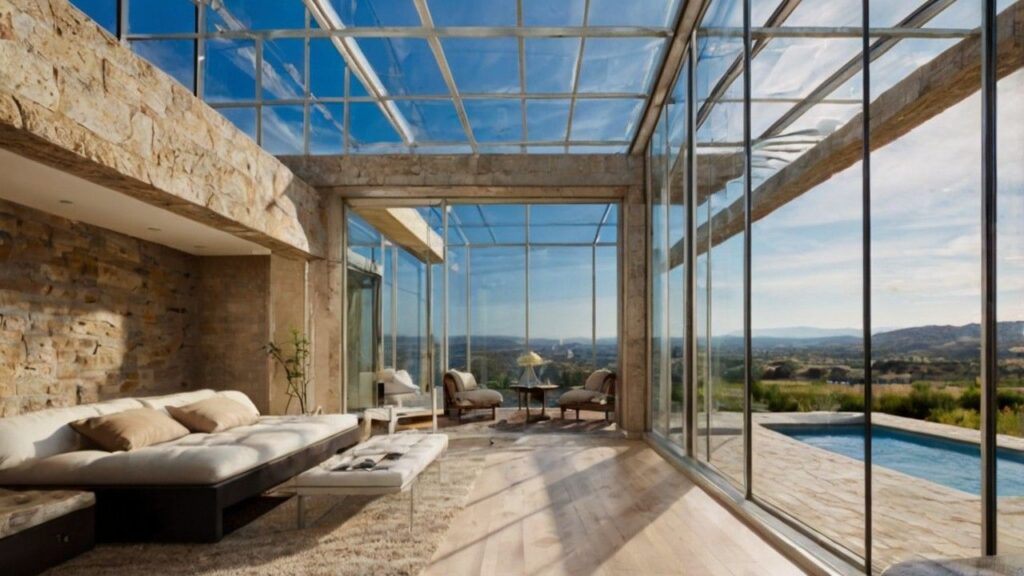Choosing the Perfect Conservatory Design: Styles, Costs, and Benefits
Summary: Successful conservatory design starts with understanding your needs. Professional conservatory design considers your home’s style and available space. The best conservatory design balances function with appearance. You’ll need to choose from various styles and materials. Contemporary conservatory design offers options like glass, plastic, or tiled roofs. Proper roof insulation and airflow are essential in any conservatory design. Careful planning ensures your conservatory design meets all your requirements.
A conservatory is a room with lots of windows. Modern conservatory design has evolved beyond simple glass rooms. It connects your home to your garden. People used to grow plants in them. Today’s conservatory design focuses on creating versatile living spaces. You can eat, relax, work, or grow plants in them.
Why Should You Listen to Us?
Our UK-based team helped over 1M homeowners save up to 40% on home improvement quotes since 2006. By using our free no-obligation quote comparison service, you will receive the most competitive quotes from vetted and accredited local companies.
What is a Conservatory?
The right conservatory design can transform your home in many ways. It gives you more living space and brings in natural light. A well-planned conservatory design adds value to your property. You can use it for different activities throughout the year. Professional conservatory design helps you feel closer to nature, even while indoors. The Royal Horticultural Society offers great ideas for using your conservatory as a garden room.
Why Add a Conservatory?
Adding a conservatory gives you more living space in your home. It brings in more natural light, which can make your home feel brighter. A conservatory can also make your home worth more money. You can use it for many different things throughout the year. It also helps you feel closer to nature, even when you’re inside.
Think About Your Needs and Space
What Will You Use It For?
Your intended use should guide your conservatory design choices. Will it be for reading? For parties? For plants? Every conservatory design can be customized to match your lifestyle. Think about what you need most in your home.
Look at Your Available Space
Check how much room you have for your new conservatory. Think about the size of your yard. Consider how close your neighbours are. Look at where the sun shines most in your garden. Note any trees or patios that might be in the way. All these things will affect where you can build.
Thoroughly Vetted Professionals
Every supplier in our network goes through a strict vetting process, including credit checks and accreditation verification.
Popular Conservatory Styles
Each conservatory design style has its own unique features. Your choice should match your home’s character. Contemporary conservatory design offers more options than ever before.
Victorian Style
Victorian conservatories have fancy roofs. They often have a rounded front. They look good on both old and new houses. This style adds a classic touch to your home. It’s great if you want something that looks traditional. The Victorian era was known for its beautiful architecture, as explained in this overview of Victorian architecture.
Edwardian Style
Edwardian conservatories are square or rectangle shaped. They give you lots of floor space. They have a flat front and a sloped roof. This style is good if you want a simple, clean look. It works well for modern homes.
Lean-to Style
Lean-to conservatories are simple. They have a roof that slopes down to the house. They’re good for small spaces or single-story homes. This style is often the cheapest option. It’s great for homes with less space.
Gable-end Style
Gable-end conservatories have a high, pointed roof. They let in lots of light. They look grand and make a big impact. This style can make your home look more impressive. It’s good if you want a dramatic look.
P-shaped and T-shaped Styles
These styles are for bigger homes. They combine two types of conservatories. This gives you different areas in one big space. You can use each area for something different. They’re great for large families or if you need lots of extra room.
Choosing Materials
The materials you choose will impact your overall conservatory design. Modern conservatory design techniques allow for various material combinations.
uPVC
uPVC is a popular choice for conservatories. It’s cheap and easy to care for. You don’t need to paint it or treat it. But there aren’t many colour choices. It might not look right on very old houses. Still, it’s a good choice if you’re on a budget.
Aluminium
Aluminium is strong and the frames are thin. This means you get more glass and view. It looks modern and sleek. But it costs more than uPVC. It might not keep heat in as well. Choose this if you want a modern look.
Wood
Wood looks natural and suits old houses well. It’s good for the environment too. But you need to take care of it often. You’ll need to paint or treat it regularly. It also costs more at first. Pick wood if you want a traditional look.
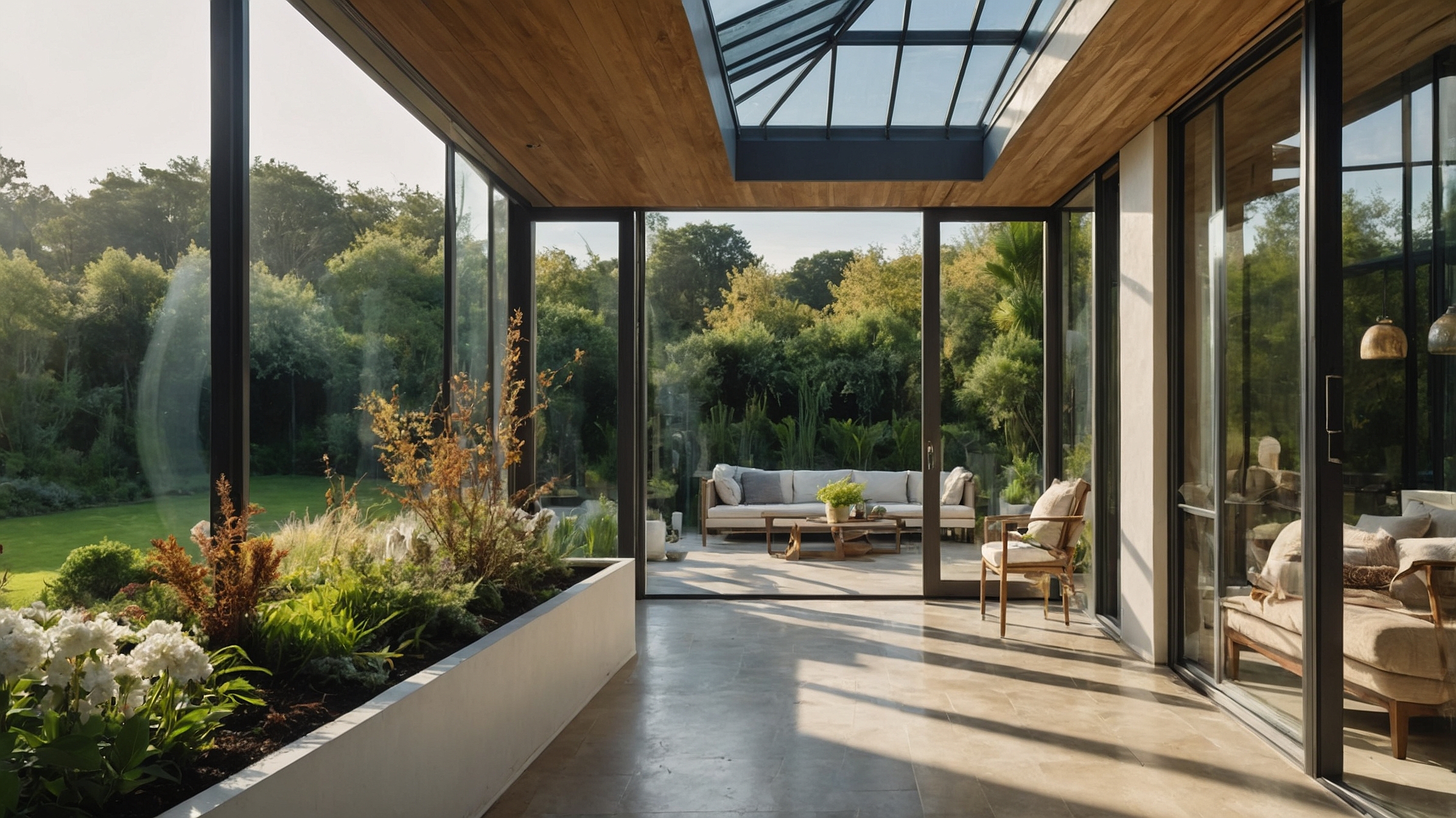
Roof Options
The roof is a crucial element of your conservatory design. It affects both appearance and comfort.
Glass Roofs
Glass roofs let in lots of light. Your conservatory will feel bright and airy. New types of glass can keep heat in well. They can also keep the room cool in summer. Glass roofs let you see the sky.
Plastic Roofs
Plastic roofs are cheaper than glass. They’re light and keep heat in well. But they might not look as nice as glass. They can be noisy when it rains. Plastic roofs let in less light than glass.
Tiled Roofs
Tiled roofs make your conservatory look like part of your house. They keep heat in very well. Your conservatory will stay warm in winter. But they let in less light than glass or plastic. Choose this if you want your conservatory to match your house.
Keeping Comfortable: Warmth and Air
Keeping Warm
Good insulation keeps you warm in winter and cool in summer. Consider using double or triple glazed windows. These traps heat better. Special coatings on the glass can help too. Make sure the frames have good insulation. This will stop heat escaping. The Energy Saving Trust provides useful advice on conservatory insulation to help you make informed decisions.
Getting Fresh Air
Good airflow stops the room from getting too hot or damp. You can use roof vents that open. Windows that open are important too. Ceiling fans can help move air around. For winter, think about heating under the floor. This will keep the room cosy all year.
Accredited Professionals, thoroughly vetted through reference and credit checks. Registered with self-certification schemes, guaranteeing high standards of workmanship.
Rules and Permissions
Do You Need Permission?
Most conservatories don’t need special planning permission to build. But you should check if your house is very old or special. If you live in a protected area, you might need permission. Also check if the conservatory will cover more than half your yard. It’s always best to check with your local council first.
Building Rules
Make sure your conservatory follows building rules. It needs to save energy and be strong and safe. Think about fire safety too. Make sure everyone can get in and out easily. These rules are there to keep you safe and comfortable.
Planning Your Budget
Quality conservatory design requires careful budget planning. Different design features will affect the final cost.
What Affects the Cost?
The size of your conservatory will affect the price. The style you choose matters too. What it’s made from can change the cost a lot. The type of roof you pick is important. You might need special foundations. Extra features like underfloor heating cost more. Think about all these when planning your budget.
Getting Prices
Ask at least three good companies for detailed prices. This will help you find the best deal. Think about different ways to pay. You could get a special home improvement loan. You might change your mortgage to cover the cost. Using your savings is another option. Choose the way that works best for you.
Save Up to 40% on Your Project
Focus on competitive pricing could save up to 40% and these savings might allow you to choose higher-quality materials or add extra features.
Decorating Your Conservatory
Interior conservatory design is just as important as the external structure. Your decoration choices should complement the overall design.
Furniture
Choose furniture that fits the style of your conservatory. Think about how you’ll use the room. Pick materials that can handle sun and heat. Look for pieces that can be used in different ways. Adding plants can make it feel more like a garden. This brings the outside in.
Lighting
Use different types of lights in your conservatory. Natural daylight is great during the day. You’ll need bright lights for tasks like reading. Soft lights are nice for relaxing in the evening. Good lighting makes the room usable all day and night.
Floors
Pick a floor that’s tough and looks good. Tiles give a classic look. They’re easy to clean too. Laminate is a cheaper option. It can look like wood or stone. Real stone gives a natural feel. But it’s more expensive. Choose a floor that fits your style and budget.
Taking Care of Your Conservatory
Regular Care
Clean the glass and frames often. This keeps your conservatory looking good. Check the seals and hinges every year. This stops leaks and drafts. If you have wooden frames, treat them as needed. This stops the wood from rotting. Regular care makes your conservatory last longer. For more detailed maintenance tips, check out this guide to conservatory care from industry experts.
Common Problems
Be ready to deal with common issues. Water on the windows is normal. But too much can mean poor air flow. Look out for leaks when it rains. Fix them quickly to avoid damage. Plastic frames might change colour over time. This is normal but can be prevented.


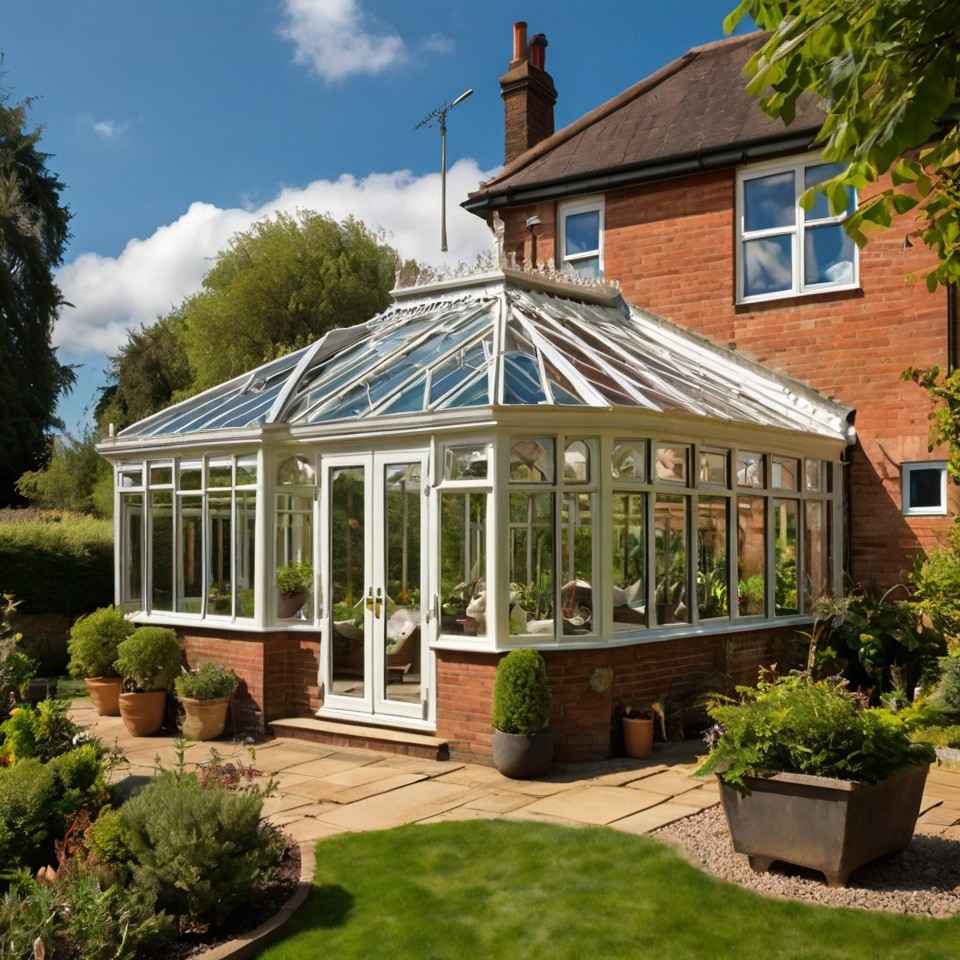
Adding Technology
Smart Home Features
Think about adding some high-tech features. You could get heating and cooling that works on its own. Lights you can control with your phone are handy. Blinds that open and close by themselves are useful. These features make your conservatory easier to use.
Saving Energy
Look into ways to save energy in your conservatory. Glass that controls heat from the sun is useful. Films that reflect heat can keep the room cool. Energy-saving heating and cooling systems are a good idea. These help keep your energy bills down.
Real Examples
Modern Simple Lean-to
One family added a sleek lean-to to their home. It made their small kitchen much bigger. The new space lets in lots of light. It connects their home to the garden. Now they use this space all the time.
Family Room with a Victorian Look
Another home got a big Victorian-style conservatory. It became the favourite room in the house. It’s cosy but bright. They can use it all year round. It’s great for family time and entertaining guests.
Making the Right Choice
Successful conservatory design combines practical needs with personal style. Take time to explore different design options. Look at various conservatory design examples before making your decision. Consider how each design element works together.
Final Thoughts: Thoughtful conservatory design creates a space you’ll love for years. Consider what you need and like. Modern conservatory design offers countless possibilities for your home. Work with experienced designers to bring your vision to life. Focus on comfort and functionality in your conservatory design. Let your personality shine through in the final conservatory design. With careful planning, your conservatory will become your favorite room.
How much does a conservatory typically cost?
Conservatory costs vary widely, from £5,000 to £50,000 or more. The price depends on size, style, materials, and extras. A simple uPVC lean-to is cheapest, while a large, bespoke hardwood conservatory design costs the most.
Do I need planning permission for a conservatory?
Most conservatories don’t need planning permission if they meet certain conditions. These include size limits and distance from property boundaries. Always check with your local council before starting construction.
What’s the best material for a conservatory roof?
The best material depends on your needs. Glass lets in most light but can get hot. Polycarbonate is affordable but less durable. Solid roofs offer best insulation but less natural light.
How long does it take to build a conservatory?
Building a conservatory typically takes 3-4 weeks. This includes about a week for foundations, a week for the main structure, and 1-2 weeks for finishing touches like flooring and electrics.
Can I use my conservatory all year round?
Yes, with proper insulation and heating. Double or triple glazing, underfloor heating, and good ventilation can make your conservatory comfortable in all seasons. A solid roof can also help regulate temperature.
What’s the difference between a conservatory and an orangery?
Conservatories have mostly glass roofs and walls. Orangeries have more solid walls and a flat roof with a glass lantern. Orangeries often look more like a natural extension of the house.
How do I keep my conservatory cool in summer?
Use blinds or curtains to block direct sunlight. Install vents or a ceiling fan for air circulation. Consider solar control glass or window films. Plants can also help absorb heat.
What type of flooring is best for a conservatory?
Tiles are durable and easy to clean. Laminate is affordable and looks good. Stone is natural but needs sealing. Carpet is cosy but can fade. Choose based on your style and how you’ll use the room.
Can I put a kitchen in my conservatory?
Yes, you can put a kitchen in a conservatory. However, you’ll need proper ventilation, insulation, and possibly planning permission. Consider the extra heat from cooking appliances when designing the space.
How do I maintain my conservatory?
Clean glass and frames regularly. Check seals and hinges annually. Treat wooden frames as needed. Clear gutters of leaves. Address any leaks promptly. Regular maintenance helps your conservatory last longer and look better.
UK-Based Support Team
Our knowledgeable, UK-based support team is familiar with local markets, regulations, and trends, so you’ll always get relevant and current advice.
Simply Fill in Your Details, and Receive Competitive Quotes from Accredited Companies Tailored to Your Project!
Our team brings almost two decades of expertise in the UK home improvements sector, giving you unique insights into its challenges and possibilities. Reaching out to us means tapping into a wealth of experience from home improvements experts who know the British market inside out.
All our suppliers are members of one or more consumer protection groups below.

We offer unparalleled market insights, a network of skilled professionals vetted, accredited and reference – credit checked who can handle projects of all sizes. Our knowledgeable UK-based team will ensure a smooth, informed experience from start to finish.
To send us your marketing and other service offers, please use the following email: offers@comparison.market


